The crazy thing about going on a service trip to another country is when you get home. Everything is the same – same people, same places, same smells. Yet, everything is different. I realized that what had changed was me. I learned about medicine while I was there, and we helped people as much as we could during the time we were there. However, the biggest help we gave to the local people wasn’t healthcare at all – it was love. Building relationships and sharing stories with the people, showing that we cared, and playing with the children with all the time we had seemed to mean the most to them. The people were so grateful for anything we had to offer, and they were so kind and content.
The culture was very different from anything here in the United States. The children were especially well behaved and grateful for receiving even one McDonalds toy, as it was the only toy they had. We spent the first day in-country visiting local orphanages. We prepared for the King’s Children’s Home first, where we saw about sixty children in the afternoon. Our group gave out gift bags to each of the children in the home, which contained pencils and notebooks (they need school supplies badly), as well as sunglasses to protect from the rampant sun damage and a toy. We also visited Marla’s House of Hope, which was in a secret location because it housed girls who were victims of sex trafficking originally and many of their children as well. After each girl had a visit with one of the doctors, we gave out vitamins and flip flops, as many of them didn’t have shoes, which caused them to contract pinworms from walking around in the dirt.
It is difficult to explain the gratitude each of the children in these orphanages showed on their faces. They looked forward each year to the week when our group came, as it was their only “gift” of the year and their only medical visit. The next three days were spent working in the “clinic” we had set up, which consisted of trash bag room dividers and a suitcase pharmacy in the local Nazarene church. We got help from local people, who we paid $25/day to translate for the people who didn’t speak English (mostly elderly). When we arrived at the clinic the first day to set up, there was a line of people stretching down the street who were waiting to been seen by a doctor. Many of these people sent one person from each home to wait in line to be seen, depending on who might need medical attention the most. When the patient was “triaged,” we got information on how many people were living in their home so that we could better determine how many vitamins to provide for their family.
I was so surprised at the condition of the homes in the villages we visited (one room huts made of trash and sheet metal). Each of these contained around 15-20 people.
My primary job during the clinic was to work at the glasses station, which I found to be the most rewarding experience of the entire trip. Some of these people who came to our clinic were in their sixties and had never had glasses before. A local Conway ophthalmologist had donated five hundred pairs of glasses to our trip, although we didn’t know what prescriptions they were, as they were used. It was kind of difficult at first to help people find the glasses that might work best for them because of this, since we had to just keep trying them on until we found a pair they liked. However, we eventually found ways that worked best for us at our station and attempted to sort them by their strength.
The coolest part of the entire trip was seeing elderly patients who finally put on that “perfect” pair of glasses. Their faces lit up immediately, and that’s how we knew we had found the pair that fit them. It is amazing how these people were so resilient; they had gone their entire lives without being able to see and had successfully held jobs and raised families.
I was also lucky enough to get to observe our two physicians, Dr. Andrew Cole, OBGYN, and Dr. Tom Roberts, orthopedic surgeon, as they did some of their patient care. The medical problems we have here are very different from the medical problems there, because there is so little health care available to the people. Dr. Cole removed several warts and growths from people’s’ skin (we joked that he was the new dermatologist). Because of the high carb diet (beans, rice, tortillas), the people often had hypertension, diabetes, and obesity as diseases, but it wasn’t very well controlled, so we gave out as many glucometers as we could. I met four year old Aliyah during the last day of clinic, as I talked with her while her mom was seen by the doctor. She ended up stealing my pen and writing her name on my thigh so I “wouldn’t forget her,” but I knew that I never would. She had the most innocent and real smile I’d ever seen.
In the clinic, we saw 492 families, treated 1387 people, filled 2603 prescriptions, and gave out 500 glasses. The last day, we spent visiting the school another group had built in a previous year. I was walking around the school when Aliyah came up and jumped on me. She showed me her classroom and we spent a little while building blocks before we had to leave. She hugged me and said that she would miss me and hoped that I would come back next year. I will.




